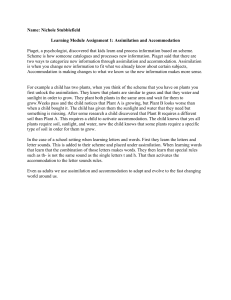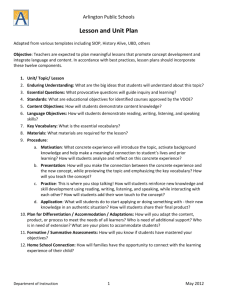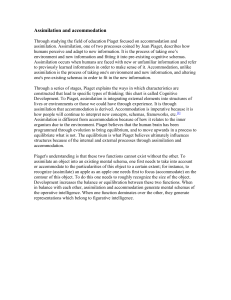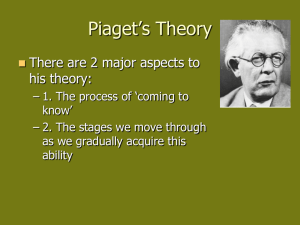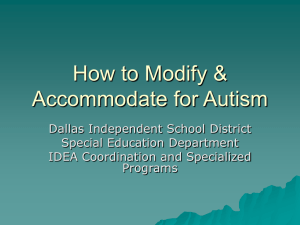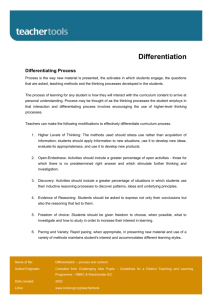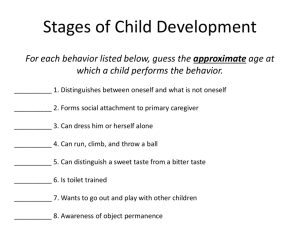Critical Thinking #1
advertisement
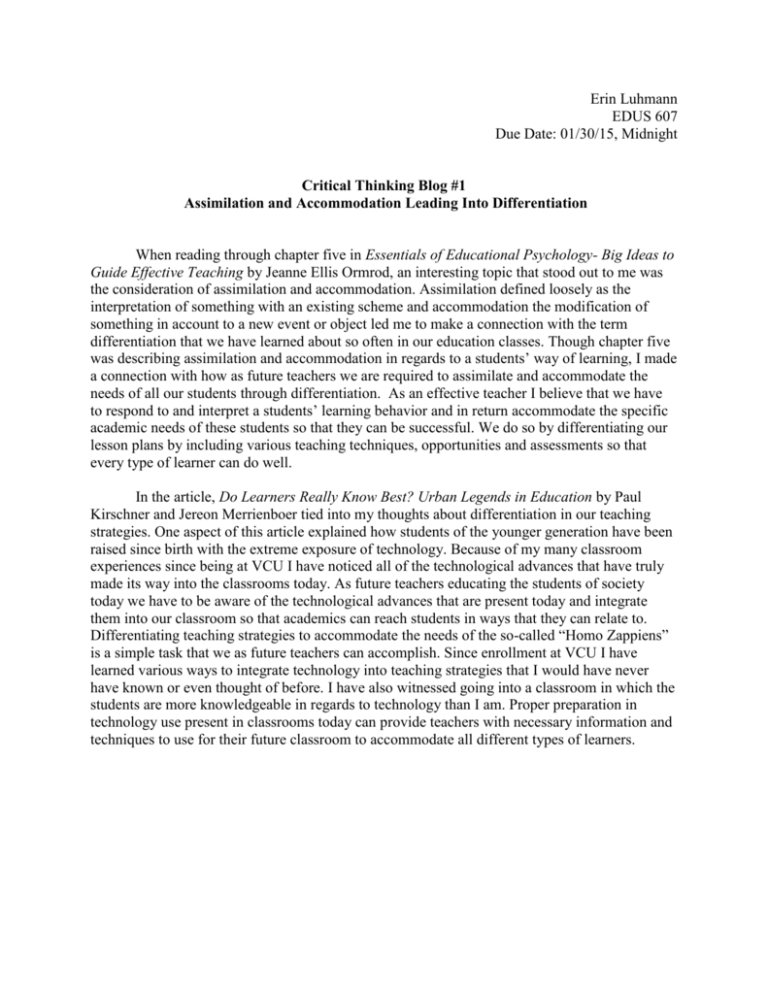
Erin Luhmann EDUS 607 Due Date: 01/30/15, Midnight Critical Thinking Blog #1 Assimilation and Accommodation Leading Into Differentiation When reading through chapter five in Essentials of Educational Psychology- Big Ideas to Guide Effective Teaching by Jeanne Ellis Ormrod, an interesting topic that stood out to me was the consideration of assimilation and accommodation. Assimilation defined loosely as the interpretation of something with an existing scheme and accommodation the modification of something in account to a new event or object led me to make a connection with the term differentiation that we have learned about so often in our education classes. Though chapter five was describing assimilation and accommodation in regards to a students’ way of learning, I made a connection with how as future teachers we are required to assimilate and accommodate the needs of all our students through differentiation. As an effective teacher I believe that we have to respond to and interpret a students’ learning behavior and in return accommodate the specific academic needs of these students so that they can be successful. We do so by differentiating our lesson plans by including various teaching techniques, opportunities and assessments so that every type of learner can do well. In the article, Do Learners Really Know Best? Urban Legends in Education by Paul Kirschner and Jereon Merrienboer tied into my thoughts about differentiation in our teaching strategies. One aspect of this article explained how students of the younger generation have been raised since birth with the extreme exposure of technology. Because of my many classroom experiences since being at VCU I have noticed all of the technological advances that have truly made its way into the classrooms today. As future teachers educating the students of society today we have to be aware of the technological advances that are present today and integrate them into our classroom so that academics can reach students in ways that they can relate to. Differentiating teaching strategies to accommodate the needs of the so-called “Homo Zappiens” is a simple task that we as future teachers can accomplish. Since enrollment at VCU I have learned various ways to integrate technology into teaching strategies that I would have never have known or even thought of before. I have also witnessed going into a classroom in which the students are more knowledgeable in regards to technology than I am. Proper preparation in technology use present in classrooms today can provide teachers with necessary information and techniques to use for their future classroom to accommodate all different types of learners.
